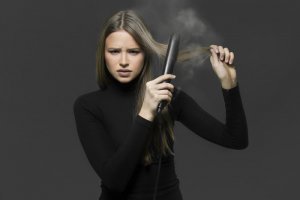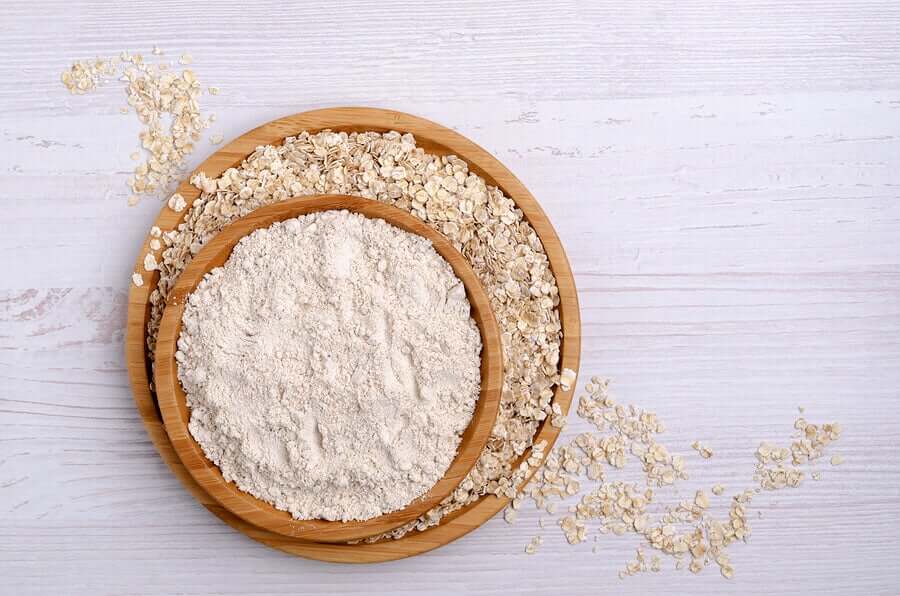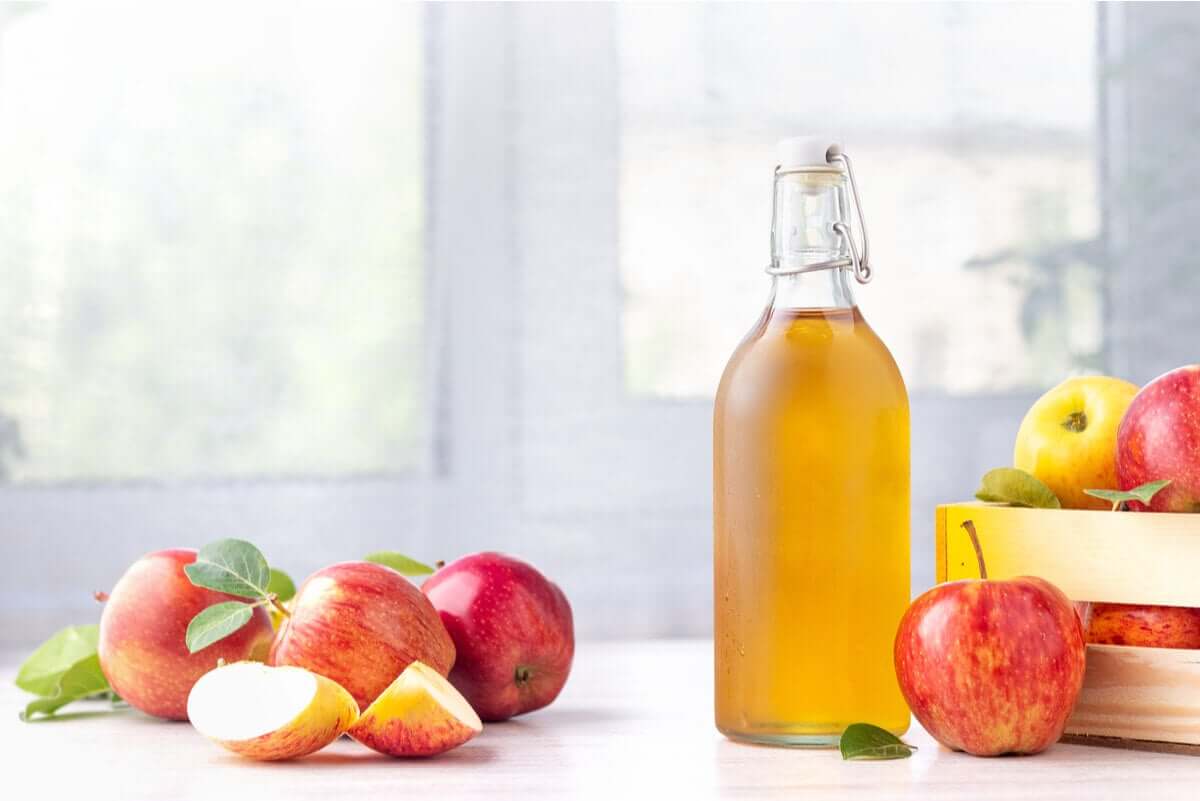Four Ways to Straighten Your Hair Naturally Without an Iron

In recent years there has been growing interest in different methods of hair straightening. However, many of the options involve exposing the hair to high temperatures and chemical processes that, over time, are quite aggressive as detailed in a study published in Annals of Dermatology.
In response to this, many have dusted off some natural recipes whose properties could be useful for straightening hair without the need to use a flat iron, blow dryer, or other damaging elements. However, these are options that lack evidence and whose effects only come from people’s testimonials.
In any case, most of the options are 100% natural and are made with ingredients that aren’t aggressive and can provide nutrients. So, if you still decide to try them, here are some recipes.
How to Straighten Your Hair Naturally
1. Oatmeal and aloe vera

Is it possible to straighten hair with a homemade oatmeal and aloe vera cream? Those who’ve tried the treatment suggest that it does help achieve straight hair. However, beyond anecdotal evidence, there’s no proof that this is true.
What we do know for sure is that both oatmeal and aloe vera gel contain nutrients that benefit hair health. According to information published in the Journal of Food Science and Technology, oats are a source of dietary fiber, phytochemicals, healthy fats, vitamins and minerals.
Meanwhile, a study published in BMC Complementary and Alternative Medicine notes that aloe vera continues to be used today for the treatment of scalp and hair disorders. If you want to try this remedy, follow the steps below.
Ingredients
- 1 aloe vera leaf
- 2 tablespoons of ground oats (30 g)
Preparation and application
- First, remove the pulp of the aloe vera leaf and add two tablespoons of oatmeal to make a paste.
- Then, work it through your hair and massage your scalp with it.
- Leave on for 20 minutes. Then, wash your hair with cold water.
2. Jasmine and olive oil
Research published in the International Journal of Molecular Sciences highlights that the topical application of some vegetable oils, such as olive oil, has antioxidant and anti-inflammatory effects that protect the skin barrier. In addition, because of their ability to moisturize and protect, they’re also useful in hair cosmetics.
However, there’s no study that proves that jasmine oil combined with olive oil smoothes the hair. This option is simply a treatment that’s been shared in popular culture for this purpose. Let’s see what it consists of.
Ingredients
- 2 tablespoons of a natural conditioner (30 ml)
- 2 tablespoons of olive oil (30 ml)
- 5 or 6 drops of jasmine oil
Preparation and application
- Mix the conditioner, the olive oil, and the jasmine oil drops.
- Work it through your hair after washing it with shampoo and before applying conditioner.
- Leave on for 20 minutes and then rinse with plenty of water.
3. Apple cider vinegar and water

Many benefits have been attributed to apple cider vinegar in terms of hair health. However, there are no studies to back up claims about its ability to make hair healthier and stronger. However, the Belgravia Centre, a leader in hair loss treatment in the UK, stresses that:
“The only real benefit we are aware of is that apple cider vinegar can be a good clarifying hair rinse as it helps to remove all traces of product build up on your scalp.”
Knowing this, we can’t state that this treatment will straighten your hair. However, we can incorporate it into the hair routine to see what effects it has.
Ingredients
- 2 tablespoons of apple cider vinegar (30 ml)
- 1 cup of water (250 ml)
Preparation and application
- First, dilute the apple cider vinegar in the cup of water.
- Then, apply it all over your scalp after washing your hair with shampoo.
- After, let it air dry.
4. Rice flour and egg
The last treatment we found is a mixture of egg white and rice flour. Both ingredients have been used in natural cosmetics since ancient times and are therefore often found in home hair treatments. But do they help to straighten hair naturally?
On the Internet, it’s one of the most popular remedies for this purpose. Some anecdotal data even point to certain benefits. However, it would be necessary to be very constant with its use to see a result. Take note of the following recipe if you want to give it a try.
Ingredients
- 1 egg white
- 3 tablespoons of rice flour (45 g)
Preparation and application
- First, add the tablespoons of rice flour to the egg white and mix.
- Then, work the mixture through your hair.
- Afterwards, comb your hair and leave in for an hour.
- After this time, shampoo your hair and rinse well with cold water.
Do these treatments help straighten hair?
In conclusion, whether or not these treatments work to straighten hair may depend on each hair type. Perhaps, they can be useful if the hair is barely curly and not frizzy. In any case, as there’s a lack of evidence, they should be tested for some time to see if they give good results.
All cited sources were thoroughly reviewed by our team to ensure their quality, reliability, currency, and validity. The bibliography of this article was considered reliable and of academic or scientific accuracy.
- Castañeda Gameros Paola, López Cordero Sofía. El pelo: generalidades y enfermedades más comunes. Rev. Fac. Med. (Méx.) [revista en la Internet]. 2018 Jun [citado 2018 Dic 06] ; 61( 3 ): 48-56. Disponible en: http://www.scielo.org.mx/scielo.php?script=sci_arttext&pid=S0026-17422018000300048&lng=es.
- Marsh, J. M., Davis, M. G., Lucas, R. L., Reilman, R. , Styczynski, P. B., Li, C. , Mamak, M. , McComb, D. W., Williams, R. E., Godfrey, S. , Navqi, K. R. and Chechik, V. (2015), Preserving fibre health: reducing oxidative stress throughout the life of the hair fibre. Int J Cosmet Sci, 37: 16-24. doi:10.1111/ics.12285
- Lee Y, Kim YD, Hyun HJ, Pi LQ, Jin X, Lee WS. Hair shaft damage from heat and drying time of hair dryer. Ann Dermatol. 2011;23(4):455–462. doi:10.5021/ad.2011.23.4.455
- Rasane P, Jha A, Sabikhi L, Kumar A, Unnikrishnan VS. Nutritional advantages of oats and opportunities for its processing as value added foods – a review. J Food Sci Technol. 2015;52(2):662–675. doi:10.1007/s13197-013-1072-1
- Zaid AN, Jaradat NA, Eid AM, Al Zabadi H, Alkaiyat A, Darwish SA. Ethnopharmacological survey of home remedies used for treatment of hair and scalp and their methods of preparation in the West Bank-Palestine. BMC Complement Altern Med. 2017;17(1):355. Published 2017 Jul 5. doi:10.1186/s12906-017-1858-1
- Lin TK, Zhong L, Santiago JL. Anti-Inflammatory and Skin Barrier Repair Effects of Topical Application of Some Plant Oils. Int J Mol Sci. 2017;19(1):70. Published 2017 Dec 27. doi:10.3390/ijms19010070
This text is provided for informational purposes only and does not replace consultation with a professional. If in doubt, consult your specialist.








